Are you considering getting rid of that old fireplace in your home? You’re not the only one. Recent data from Statista shows a notable decrease in the popularity of fireplaces installations in recent years.
In 2017, less than 320,000 new homes were built with fireplaces, a significant drop from the 818,000 homes constructed with fireplaces in 2005.
This trend largely stems from growing environmental concerns and the availability of more efficient heating alternatives. However, the allure of creating additional space or updating your home’s aesthetic might also be driving factors for you to consider removing your fireplace.
Despite the apparent benefits, removing a fireplace, particularly one in the heart of your home, can be a complex task requiring careful planning and execution.
In this guide, we walk you through the fireplace removal process and equip you with the essential knowledge you’ll need to tackle this task effectively.
Can you Remove a Fireplace Without Removing a Chimney?
Yes, you certainly can remove a fireplace without removing the chimney from your home. However, you must understand a few crucial factors before proceeding with the project.
1. Compliance with Local Regulations
Fireplace removal may be subject to specific legalities and building codes depending on your jurisdiction. These regulations are in place to ensure safety, preserve structural integrity, and mitigate environmental impacts.
For instance, most jurisdictions in the USA require a permit before removing your fireplace. , and the work must pass a municipal inspection. Failure to do so may lead to fines of up to $500 per day. Therefore familiarizing yourself with these regulations is crucial to avoid legal issues.
2. Understanding if the Chimney is Load-Bearing
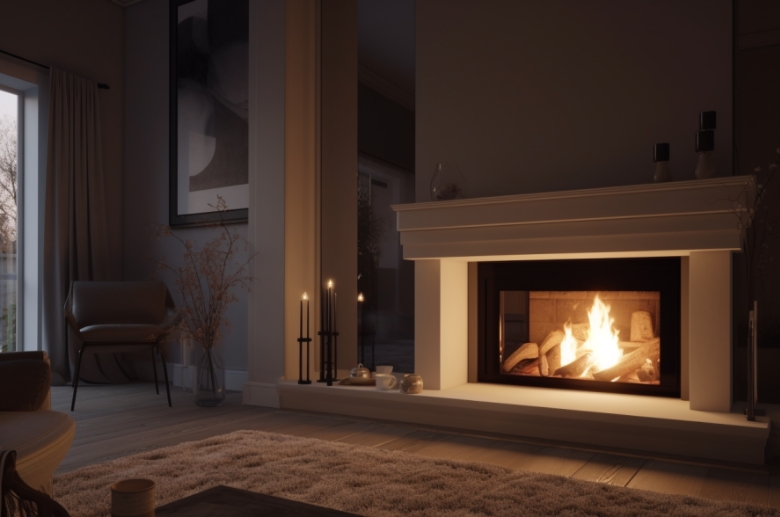
Some chimneys bear the weight of the building and transfer it to the foundation. Their removal could compromise the building’s stability and structural integrity.
Understanding this will help you effectively approach your fireplace removal process.
For this step, we highly recommend you consult with a structural engineer or a qualified building professional to help you:
- Assess the construction of your home
- Analyze the chimney’s load-bearing capacity
- Provide expert advice on whether the chimney can be safely retained without the fireplace.
Here are some general guidelines to help you understand whether your chimney is load-bearing:
- Examine your chimney’s position: Assess the chimney’s location concerning the surrounding walls and floors. If the chimney runs vertically through multiple levels of the house and aligns with load-bearing walls or beams, it is more likely to be load-bearing.
- Evaluate the chimney’s foundation: The chimney carries a structural load if it has a separate foundation or is connected to the house’s main foundation.
- Consider the chimney’s construction: Analyze its construction, including the materials used and its connection to the house. Masonry chimneys are typically load-bearing due to their weight and how they are integrated into the structure. On the other hand, metal or prefab chimneys are often non-load-bearing as they are self-supporting.
- Assess the presence of lateral supports: Look for evidence of lateral supports, such as braces or tie beams, connecting the chimney to adjacent walls or floors. If present, these supports indicate the chimney plays a vital structural role.
——
Do You Need to Hire Chimney & Fireplace Expert?
Get free quotes from qualified experts near you. No commitment required!
——
3. The Need to Install Chimney Supports
Since the fireplace and chimney system are often designed as integral components of the house’s construction, removing the fireplace can create an imbalance in the load distribution or put undue stress on the chimney.
This makes it essential to install chimney supports to maintain your home’s structural integrity. Below are more reasons why installing chimney supports may be necessary.
- Even Load Distribution: Installing chimney supports ensures that the load previously distributed to the chimney from the removed fireplace is properly distributed, preventing excessive stress and instability.
- Enhanced Structural Balance: Removing a fireplace can disrupt a structure’s balance and load distribution, compromising stability. Installing chimney supports helps maintain the structural balance by properly distributing the load.
- Horizontal Forces: Chimneys are subjected to various horizontal forces such as wind loads and seismic activity. These forces can exert pressure on the chimney and affect its stability. Chimney supports, such as braces or steel beams, help counteract these forces, reducing the risk of structural damage during extreme weather conditions or seismic events.
- Settling and Shifting: Homes may experience settling or shifting over time due to factors like soil conditions or foundation changes that impact the alignment and stability of the chimney. Chimney supports are designed to accommodate such settling and shifting, helping to maintain the chimney’s position and prevent structural issues.
Considerations Before Removing a Fireplace
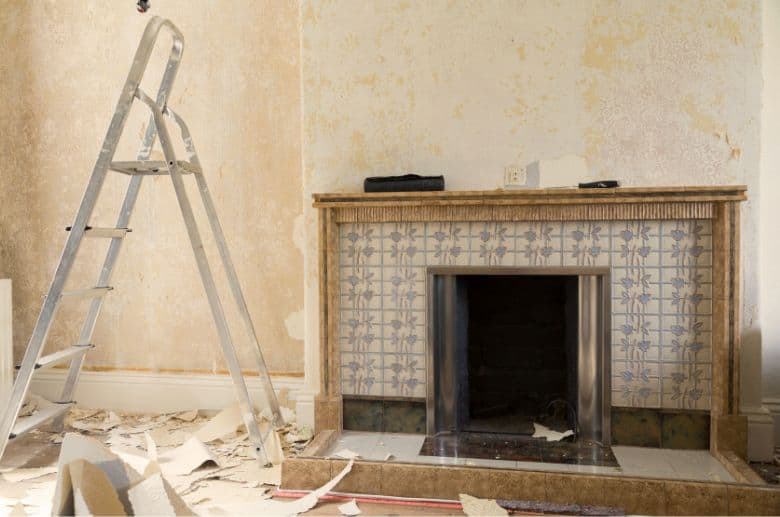
Remembering to ensure a safe and informed process before removing a fireplace is essential. Some of them include:
Is the Fireplace Decorative or Functional?
Determining whether a fireplace is decorative or functional is crucial before removing it. This distinction is important for several reasons:
- Removal Complexity: Removing functional fireplaces requires professionals and additional precautions, such as disconnecting gas lines or addressing ventilation systems. This is unlike decorative fireplaces, which are generally simpler and less involved during the removal since they are only installed for aesthetic purposes.
- Safety Considerations: Understanding the fireplace’s functionality helps determine the specific safety measures required for removal, ensuring a safe process. For instance, functional fireplaces are connected to gas lines that may pose safety hazards if not properly handled during the removal.
The Potential Hazards of Removing the Fireplace
The process of removing a fireplace can present potential hazards that you need to be fully aware of and prepared to handle. Here are the main risks associated with fireplace removal:
- Exposure to Harmful Chemicals: Removing a fireplace can expose you to harmful chemicals, such as lead-based paint or toxic sealants. When inhaled in excessive amounts, these chemicals can be detrimental to your health and may even lead to death in extreme cases.
- Harmful Dust and Debris: Fireplaces can accumulate soot, ash, and other debris over time, which may contain harmful substances such as asbestos. Disturbing these materials during removal can release hazardous dust particles into the air, posing health risks if inhaled or ingested.
- Structural Damage: The process of removing a fireplace can potentially impact the structural integrity of the surrounding area if not done correctly. The fireplace structure often supports adjacent walls or floors, and its removal could lead to unforeseen structural alterations or damage.
- Risk of Personal Injury: Fireplace removal often requires physical labor and working in confined spaces. This increases the risk of personal injuries, such as cuts, falls, or muscle strain, if not done with caution. Therefore, It’s vital to observe safety measures throughout the process.
- Damage to Gas and Electrical Lines: For fireplaces connected to gas lines or electrical circuits, there’s a risk of damaging these systems during the removal process.
Incorrect handling could lead to gas leaks or electrical hazards. A professional should always handle the disconnection and removal of these lines.
——
Do You Need to Hire Chimney & Fireplace Expert?
Get free quotes from qualified experts near you. No commitment required!
——
How Much Does it Cost to Remove a Fireplace?
The cost of removing a fireplace can range significantly, typically from $4,200 to $10,500 for a full fireplace removal and around $500 to $2,000 for a partial one. This cost fluctuates based on a variety of factors contributing to the project’s complexity and scope. Here are some key considerations affecting the removal cost:
- Fireplace Size: Larger fireplaces tend to require more labor and time to remove, resulting in a higher overall project cost compared to removing smaller ones.
- Materials Composition: Fireplaces constructed from heavier materials like brick or stone may require more labor and effort to dismantle than those made from lighter materials; plus, disposing of heavy bricks or stones can incur higher costs due to their weight.
- The Extent of the Work Required: The cost can escalate if the job involves safely disconnecting gas lines or electrical connections, removing chimney liners, or executing structural modifications.
- Labor Costs: Labor costs can vary based on geographical location, the removal’s complexity, and the experience level of the professionals you hire for the job.
- Disposal Fees: You may face additional disposal fees when getting rid of the materials removed from the fireplace, such as bricks, stones, or debris. The hauling and disposal cost for site-built materials is typically higher than that for factory-built materials.
- Repairs or Renovations Cost: Fireplace removal might reveal underlying issues or damage, necessitating further repairs or renovations. This could mean additional costs to repair affected walls, flooring, or chimney structures post-removal.
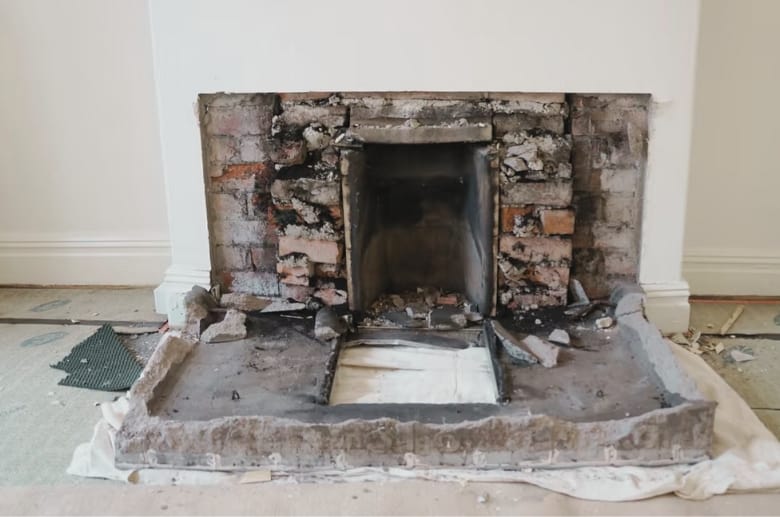
How Much Does It Cost to Remove a Brick Fireplace?
Removing a brick fireplace is more expensive than removing other fireplaces. You can expect to part ways with a brick fireplace for around $5,000 to $10,500 or more, depending on the size and location of the fireplace. The removal procedure involves more work and time, as each brick must be individually dismantled. Specialized tools and equipment, such as masonry saws and chisels, may be required, adding to the overall cost.
Additionally, the disposal of heavy and bulky brick debris can incur extra fees, and there may be additional expenses for repairs or renovations to the surrounding area once the fireplace is removed.
How Much Does It Cost to Remove a Gas Fireplace?
The average cost of removing a gas fireplace can range from $700 to $3,000. However, this cost can vary depending on the size, the fuel source, and the type of ventilation system. Demolishing the chimney breast (if necessary) will affect the total removal cost. Additional costs may include disconnecting the pipes, capping the chimney, and removing trim.
How Much Does It Cost to Remove an Electric Fireplace?
Removing an electric fireplace costs around $600 to $2,500, although the actual cost can vary based on the fireplace size and area code. Additional costs may be incurred depending on the specific circumstances of the removal. For instance, you will need a professional electrician to disconnect the electrical cables before the removal.
Another factor that can affect the cost is the condition of the surrounding area. The removal process may require additional labor and materials if the electric fireplace is built into a wall or surrounded by additional features such as mantels or cabinetry.
How Much Is the Fireplace Demolition Cost?
If you want your fireplace completely demolished, expect to pay around $4,200 to $6,500.
However, this will vary based on accessibility, size, and weight. It’s also crucial to note that, in some cases, hiring a structural engineer may be necessary to ensure the safe removal of the fireplace. Their services typically add $500 to the total cost, but this will depend on your area.
How Much Is the Chimney Removal Cost?
The cost of chimney removal can range from $2,500 to $6,200, with the final price depending on the size of your chimney. Larger chimneys that carry more load or are situated in hard-to-reach locations may require more labor and equipment, thus increasing the removal cost.
The complexity of the removal process, including any necessary structural modifications or repairs, can also impact the overall cost.
How Much Is a Partial Fireplace Removal?
The average cost of a partial fireplace removal is slightly lower, and you can expect to pay around $500 to $2,000. The actual cost will depend on various factors, like the size and complexity of the removal, the materials involved, and the project’s specific requirements, like customizations and designs.
| Service Offered | Average Cost |
| Brick Fireplace Removal | $5,000 to $10,500 |
| Gas Fireplace Removal | $700 to $3,000 |
| Electric Fireplace Removal | $600 to $2,500 |
| Fireplace Demolition | $4,200 to $6,500 |
| Chimney Removal | $2,500 to $6,200 |
| Partial Fireplace Removal | $500 to $2,000 |
How to Save Cost When Removing a Fireplace
There are several ways to save money when removing a fireplace from the middle of the house. Below are some strategies to consider:
1. Undertake Partial DIY Work
Depending on your skills and comfort level, you can handle certain aspects of the fireplace removal yourself. For example, you can prepare the workspace by removing any surrounding materials or clearing out debris after dismantling the fireplace. You can also handle the finishing or minor repairs and renovations after the removal.
2. Obtain Multiple Quotes
Seeking quotes from multiple professionals in fireplace removal allows you to compare prices and negotiate with them to find the most competitive offer. Ensure to communicate your budget and discuss any cost-saving options or alternatives they may suggest. Get at least a few quotes to have a good, solid estimate.
3. Salvage and Sell Materials
If the fireplace materials, such as bricks, stones, or mantel, are in good condition, consider salvaging them and selling them to offset the removal costs. Although you might not recoup the total cost, you can get a decent amount to help you with the overall price.
4. Consider Bundle Services
If you plan other home improvement or renovation projects, consider combining them with the fireplace removal service. Hiring the same professional or company for multiple projects can sometimes lead to cost savings as they may offer discounted rates for combined services.
5. Timing Your Project
Consider scheduling your fireplace removal during the off-season for contractors. Most contractors will offer more competitive pricing during slower periods with fewer projects and maintenance jobs.
However, it’s essential to balance cost savings with the availability and reputation of the professional you choose.
——
Do You Need to Hire Chimney & Fireplace Expert?
Get free quotes from qualified experts near you. No commitment required!
——
Step By Step Guide for Removing a Fireplace From the Middle of House
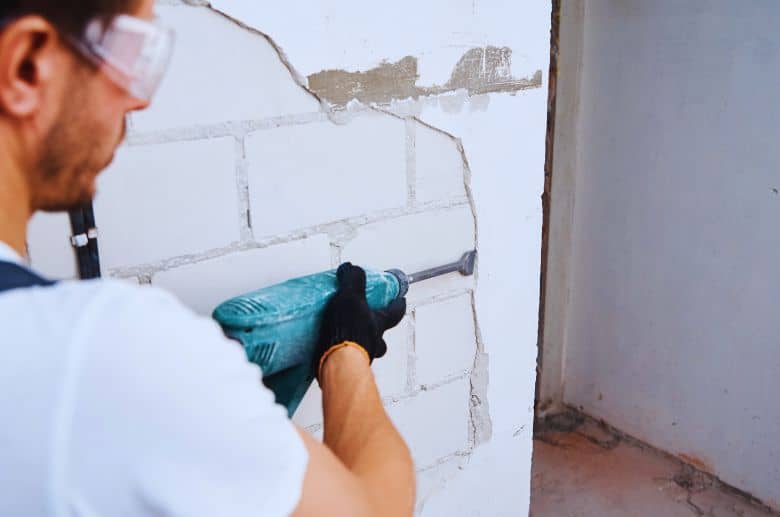
The task of removing a fireplace from the middle of a house can be challenging and requires careful planning and execution. And although it may seem like a simple DIY job, we highly recommend you consult a fireplace expert for your chimney removal for safety reasons.
Here’s why: According to CPSC, around 79,500 casualties were recorded in 2007-2008, with injuries related to incorrect use of saws. Another 42,686 deaths were recorded in 2020 from falls at home, making this the second leading cause of unintentional injury-related death.
Tools and Equipment Required for Fireplace Removal
- Safety goggles
- Dust mask
- Work gloves
- Pry bar
- Hammer
- Chisel
- Sledgehammer
- Wheelbarrow
- Drop cloths or protective coverings
Below is a step-by-step guide to removing a fireplace from the middle of the house.:
Step 1. Evaluate the structure
Assess the structural integrity of the fireplace and surrounding components. Consult with a structural engineer to ensure that the removal will not compromise the house’s stability.
Step 2. Disconnect utilities
Turn off the gas supply if it’s a gas fireplace. Disconnect any electrical connections if it’s an electric fireplace. Follow appropriate safety procedures and consult professionals for this step. Depending on your local codes, you might have to employ a professional for this part.
Step 3. Protect the surrounding area
Use drop cloths or protective coverings to safeguard the surrounding floor, walls, and furniture from dust and debris during removal.
Step 4. Remove the mantel and hearth
Start by removing the mantel using a pry bar, hammer, and chisel. Carefully detach it from the wall, taking precautions not to damage the surrounding surfaces. You can also remove the hearth by breaking it into smaller pieces using a sledgehammer or power tools.
Step 5. Dismantle the fireplace
Use appropriate tools such as a hammer, chisel, or reciprocating saw to carefully remove the bricks, stones, or other materials. Start from the top and work your way down, ensuring a safe and controlled removal of each component.
Step 6. Address structural modifications
Fill in the resulting gaps or holes left by the removed fireplace using appropriate construction materials, such as bricks, drywall, or plaster. Consult a contractor or skilled tradesperson to ensure proper structural modifications.
Step 7. Restore and renovate
Patch walls, refinish surfaces, or design the space according to your preferences.
Step 8. Dispose of debris
Place the removed fireplace components and debris in a wheelbarrow or bucket for disposal. If the debris is heavy or voluminous, arrange for a dumpster or hire a waste removal service.
Does Removing a Fireplace Decrease Home Value?
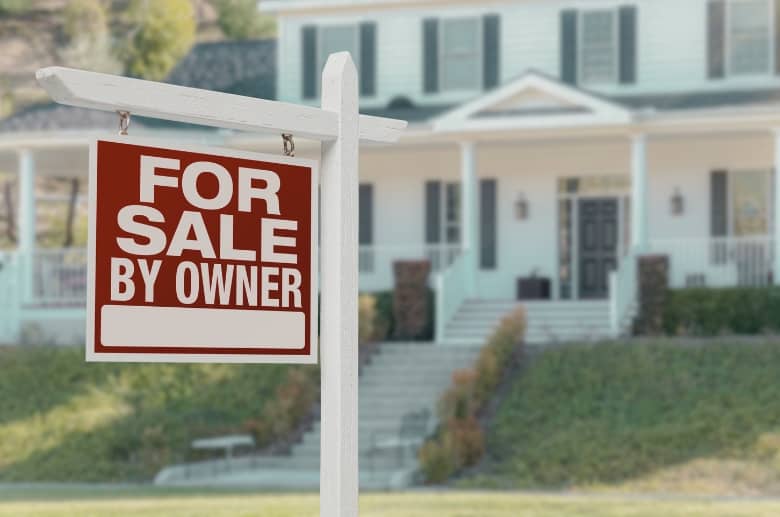
Removing a fireplace from your home could negatively impact the value of your property. According to a survey conducted by Angi in 2016, a whopping 70% of real estate agents expressed their belief that fireplaces were a valuable addition to a home.
Furthermore, an impressive 77% of prospective buyers stated their willingness to pay a premium for a property equipped with a fireplace.
Fireplaces often contribute to the aesthetic appeal and luxury feel of a home. They can be a focal point in a living room or family area, adding charm, character, and architectural interest. The absence of a fireplace may make the space feel less inviting and potentially detract from the overall ambiance.
Fireplaces can also provide additional heating options, especially in colder climates. They offer a cozy and comforting warmth that most people appreciate during winter. Removing the fireplace eliminates this heating source and may make the home less appealing.
Nevertheless, it’s essential to note that the impact on home value will depend on various factors, such as the local market conditions, your home’s specific features, and potential buyers’ preferences.
Consult with a real estate professional or appraiser who knows your local market to get a more accurate assessment of how removing a fireplace might affect the value of your home.
What Are the Benefits Of Hiring a Professional?
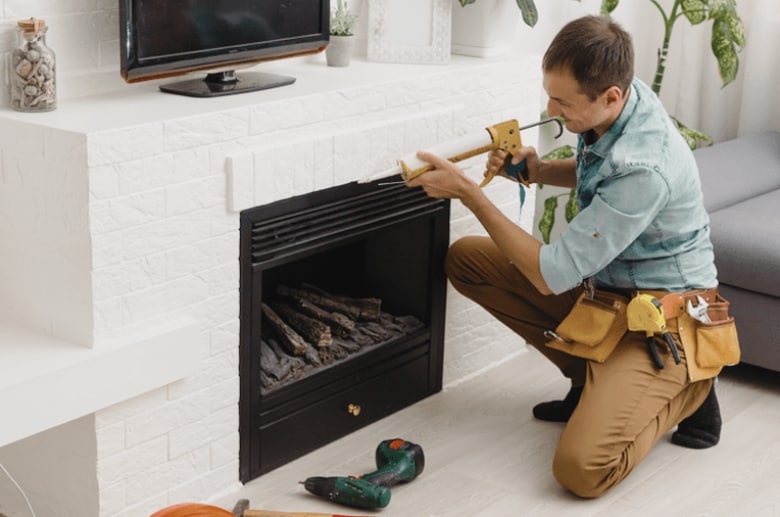
Hiring a professional to remove a fireplace is highly recommended for several reasons. Here are some benefits of entrusting the job to an experienced and qualified expert:
- Safety: Professionals have the knowledge and expertise to handle these materials safely, minimizing the risk of accidents, injuries, or damage to your property.
- Proper Removal Techniques: Professionals are trained to assess the situation, plan the removal process, and correctly execute it to prevent potential structural issues.
- Code Compliance: Building codes and regulations vary, and removing a fireplace may require obtaining permits or following specific guidelines. Professionals are familiar with these codes and can ensure the removal process adheres to all necessary regulations.
——
Do You Need to Hire Chimney & Fireplace Expert?
Get free quotes from qualified experts near you. No commitment required!
——
Factors to Consider When Choosing a Professional
When selecting a professional for your fireplace removal project, consider the following factors:
- Experience: Look for professionals with extensive experience in fireplace removal. They will have encountered various scenarios and will be better equipped to handle any challenges that may arise.
- Credentials: Check if the professional is licensed, bonded, and insured. This ensures that they have met the requirements and provides you with protection in case of any unforeseen incidents.
- Reviews and References: Read online reviews or request past client references. This will give you an idea of the professional’s reputation, work quality, and customer satisfaction.
- Certifications: Look for an expert with certifications or memberships in relevant industry organizations. It can indicate their commitment to staying updated with the latest techniques and best practices in fireplace removal.
Tips for Finding a Reputable Professional
Finding a reputable professional might seem costly and daunting. However, it doesn’t have to be with the tips below.
1. Seek Referrals: Ask friends, family, or neighbors who have had similar work done for recommendations. Personal referrals can provide valuable insights into the quality of construction results and overall experience with a particular professional.
2. Research Online: Utilize online platforms that connect you with local professionals, and read reviews and ratings from previous customers.
3. Interview Multiple Professionals: Consult with multiple professionals to discuss your project, obtain estimates, and evaluate their expertise. This allows you to compare their proposals and select the best fit for your needs and budget.
Conclusion
Removing a fireplace from the middle of a house is a complex task that only professionals should undertake. Hiring a professional ensures the job is done safely and complies with building codes. Also, they have the necessary expertise and knowledge to handle the removal process and address any structural considerations.
So if you’re ready to take the next step toward fireplace removal or simply need more information, don’t hesitate to reach out to us. Our team of experts is ready to assist you with all your fireplace removal needs. Contact us today, and let us help you realize your home improvement dreams.






